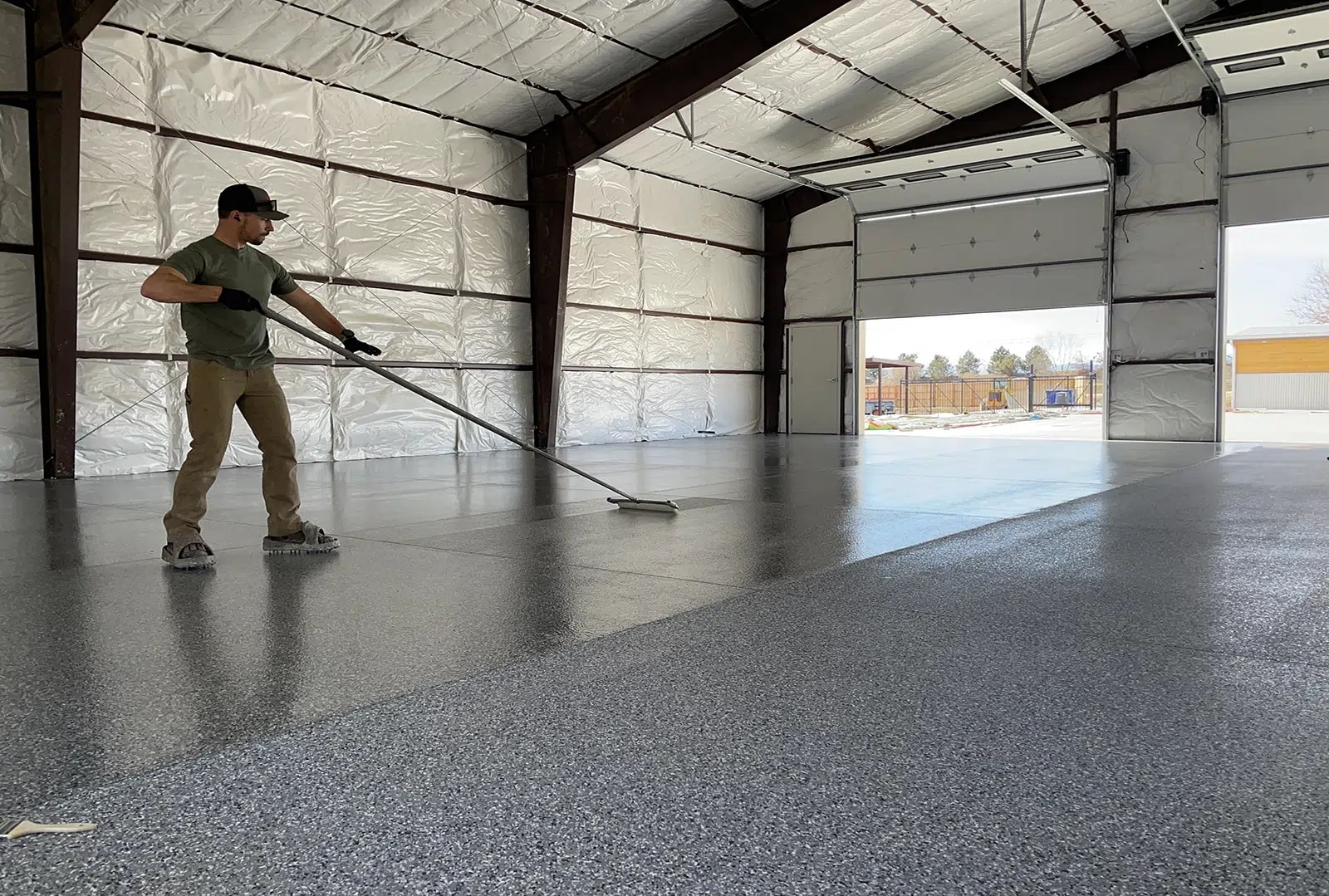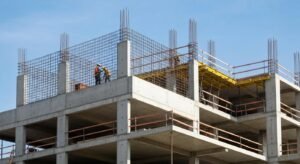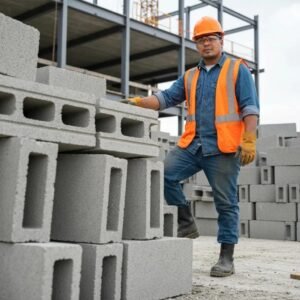Commercial concrete floors are a popular choice for industrial, retail, and office spaces due to their durability and low maintenance. However, to ensure they last for years, regular care and attention are essential. The lifespan of these floors can be significantly extended through proper cleaning, maintenance, and installation.
Maximizing Durability for Commercial Concrete Floors
Concrete floors are a versatile material suitable for high-traffic commercial spaces due to their strength and resilience. However, their longevity depends on various factors, including the environment they’re exposed to and the quality of installation. One key challenge for concrete floors is the impact of temperature fluctuations. These fluctuations can cause structural issues, such as cracking or expansion, that affect the integrity of the floor. By ensuring that the flooring is properly installed, with attention paid to expansion joints and correct material choices, businesses can mitigate these risks.
Another significant factor in extending the life of concrete floors is the selection of the right floor finish. Polished concrete floors, for example, are not only aesthetically appealing but also more resistant to wear, reducing the need for frequent maintenance. The smooth, glossy surface helps minimize surface damage caused by abrasion, chemical spills, and moisture infiltration.
Key Factors Influencing Concrete Floor Longevity
Several factors influence the longevity of commercial concrete floors. Traffic volume, especially from heavy machinery or forklifts, can cause significant wear. Areas with constant movement tend to show signs of surface damage, including scuffs, spalling, and erosion.
Additionally, environmental conditions such as temperature fluctuations, exposure to moisture, and chemical spills can degrade the structural integrity of the floor, leading to cracks or staining. Neglecting regular maintenance, such as sweeping and cleaning, can accelerate these issues.
Over time, untreated damage can lead to more severe degradation and costly repairs. Preventing such damage requires routine care and addressing minor issues before they turn into larger problems.
The Role of Professional Installation in Ensuring Durability
Proper installation is a crucial step in ensuring the durability and longevity of concrete floors, especially in commercial settings. By hiring a professional team like RJT Construction, business owners can avoid issues such as uneven surfaces, improper joint placement, and inadequate floor finishes. A skilled installation team ensures that the floor is laid correctly, which directly impacts its ability to withstand heavy foot traffic and machinery movement over time.
Additionally, the application of a protective layer like epoxy coatings or sealants at the time of installation adds an extra layer of protection. This layer helps to prevent cracks, discoloration, and stains, maintaining the structural integrity of the floor and reducing the need for frequent repairs. Proper installation lays the foundation for a long-lasting, low-maintenance floor that will perform well for years in even the most demanding commercial environments.
Effective Cleaning Strategies for Concrete Floors
Regular cleaning is essential to maintaining the appearance and longevity of commercial concrete floors. Concrete floors, especially in high-traffic areas, are prone to accumulating dirt, dust, and debris, which can lead to surface damage if left unaddressed. By establishing a consistent cleaning routine, business owners can significantly extend the life of their floors and prevent costly repairs down the line.
Different floor surfaces, such as polished concrete or standard concrete, require specific cleaning methods to ensure effective maintenance. For polished concrete floors, it’s essential to avoid abrasive cleaning tools that can damage the smooth finish. Instead, a microfiber cloth pad or dust mop is ideal for trapping dust and dirt without scratching the surface. In areas with heavy foot traffic or machinery, sweeping should be done regularly to remove debris, and a neutral pH cleaner can be used for deeper cleaning without harming the floor surface.
Daily and Weekly Cleaning Routines to Preserve Floor Quality
To ensure concrete floors remain in top condition, establish a routine cleaning schedule:
- Daily: Sweep to remove dirt, dust, and debris that could scratch or damage the surface.
- Weekly: Use a dust mop or microfiber cloth pad to clean the surface more thoroughly. Clean any spills immediately to prevent stains or contaminants from setting in.
- Monthly: Perform a deeper clean using a neutral pH cleaner and inspect for any early signs of wear or damage.
By adhering to these tasks, you can preserve the appearance and longevity of your commercial concrete floors.
Choosing the Right Cleaning Agents for Concrete Surfaces
When cleaning concrete floors, it’s crucial to choose the right cleaning agents to preserve their integrity. Neutral pH cleaners are highly recommended, as they are gentle on the surface and won’t cause chemical damage. Unlike acidic or alkaline cleaners, neutral pH cleaners do not strip away the protective layers or sealants that maintain the structural integrity of the floor. They effectively lift dirt and grime without compromising the floor finish or causing discoloration.
Avoid using harsh chemicals, such as ammonia or bleach, as these can damage the surface area and lead to surface degradation. Over time, using abrasive or acidic cleaners can cause the floor to lose its shine and durability, ultimately shortening its lifespan.
For routine cleaning, opt for mild detergents that are safe for concrete surfaces, and always follow up with a rinse to remove any residue that could affect the floor’s finish. By selecting the appropriate cleaning agents, you can maintain the appearance and longevity of your concrete floors for years.
Preventive Maintenance and Repair
Preventive maintenance is a cost-effective strategy for preserving the longevity of commercial concrete floors. By proactively addressing minor issues, businesses can avoid expensive repairs and ensure that floors remain in optimal condition for longer periods. Regular inspections are crucial in spotting early signs of wear and tear, such as uneven surfaces, cracks, or scuffs. By detecting problems early on, business owners can take corrective actions before the damage becomes severe and costly.

In addition to inspections, preventive measures like applying protective coatings or sealants can further safeguard floors from future damage. Incorporating a regular maintenance schedule can also help reduce the impact of heavy machinery and foot traffic on floors. Taking a proactive approach to floor care not only extends the life of concrete floors but also reduces the likelihood of unexpected repairs, minimizing downtime and additional costs in the future.
Regular Inspection Guidelines for Early Damage Detection
Regular inspections are essential for detecting early damage to concrete floors. Focus on areas showing signs of uneven surfaces, cracks, or spalling, which may indicate deeper structural issues. Look for signs of degradation or areas where the protective layer may be wearing thin. Early detection can help identify when floors need epoxy coatings or sealants to maintain their structural integrity. By scheduling routine checks, you can address minor issues before they lead to significant damage and costly repairs, ensuring your concrete floors remain durable and functional for longer.
Techniques for Addressing Cracks and Wear in Concrete Floors
For minor cracks and surface damage, epoxy or sealants are excellent solutions for filling gaps and preventing further wear. Concrete polishing is another technique that can restore the appearance of floors while improving their durability. This method not only enhances the aesthetic appeal but also helps extend the life of the floor by smoothing out imperfections.
In cases of deeper damage, professional repairs may be necessary, but for most surface-level issues, epoxy coatings and polishing can provide an effective, long-lasting solution that improves both the appearance and longevity of your concrete floors.
Enhancements and Protectants for Concrete Floors
Applying protective coatings and sealants is one of the most effective ways to improve the durability of commercial concrete floors, particularly in environments exposed to harsh conditions such as heavy foot traffic, equipment movement, and chemical spills.
Epoxy coatings offer an extra layer of protection, sealing the surface and preventing contaminants from penetrating. These coatings also enhance the floor’s resistance to wear and tear, reducing the need for frequent repairs. Furthermore, applying a sealant helps protect against staining, erosion, and moisture damage, making it an essential part of floor maintenance.

For floors exposed to harsh chemicals or extreme conditions, an extra layer of protection can significantly extend the floor’s lifespan. The right coatings provide a smooth, durable surface that resists abrasion, scratches, and chemical spills. In addition, they make cleaning easier by preventing dirt and debris from embedding into the floor’s surface.
By investing in high-quality protective layers, business owners can save on long-term maintenance costs while maintaining a professional and clean appearance for their commercial spaces. Regularly applying these coatings also allows you to protect the floor from environmental damage, ensuring its performance and visual appeal for years to come.
The Benefits of Sealers and Coatings
Epoxy coatings and sealants offer numerous benefits for commercial concrete floors. They enhance surface protection by providing a durable barrier against abrasion, chemical spills, and moisture. These protective layers also increase durability, preventing issues like staining, erosion, and discoloration, which are common in high-traffic areas.
Additionally, sealers and coatings provide a low-maintenance solution, making it easier to keep the floors clean and reducing the need for frequent repairs. Investing in these enhancements can significantly improve the longevity and appearance of concrete floors, ensuring they perform well over time.
When to Reapply Protective Layers to Maintain Integrity
To maintain the integrity of commercial concrete floors, it’s essential to regularly reapply protective layers like epoxy coatings or sealants. The frequency of reapplication depends on several factors, including the level of foot traffic, the use of heavy machinery, and exposure to harsh chemicals. In high-traffic areas or environments with frequent equipment movement, these layers may need to be refreshed every 2-3 years to maintain optimal protection.





